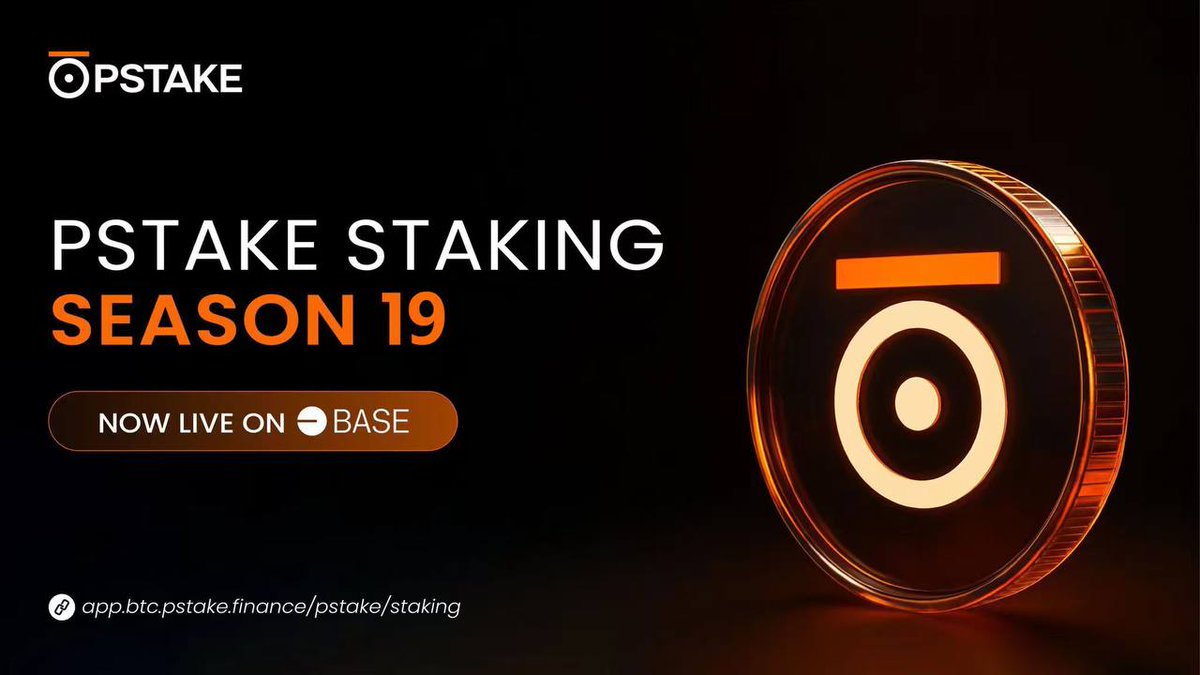pSTAKE Finance price
in EURCheck your spelling or try another.


About pSTAKE Finance
Disclaimer
OKX does not provide investment or asset recommendations. You should carefully consider whether trading or holding digital assets is suitable for you in light of your financial condition. Please consult your legal/tax/investment professional for questions about your specific circumstances. For further details, please refer to our Terms of Use and Risk Warning. By using the third-party website ("TPW"), you accept that any use of the TPW will be subject to and governed by the terms of the TPW. Unless expressly stated in writing, OKX and its affiliates (“OKX”) are not in any way associated with the owner or operator of the TPW. You agree that OKX is not responsible or liable for any loss, damage and any other consequences arising from your use of the TPW. Please be aware that using a TPW may result in a loss or diminution of your assets. Product may not be available in all jurisdictions.
pSTAKE Finance’s price performance
pSTAKE Finance on socials
Guides

Create a free OKX account
Fund your account
Choose your crypto
pSTAKE Finance FAQ
pSTAKE Finance (PSTAKE) is a liquid staking protocol built on the Persistence blockchain. The platform enables users to stake their assets, including native coins from various blockchains, seamlessly and efficiently.
One of the key benefits of pSTAKE Finance is the ability to unlock the value of staked coins. Users receive secondary tokens representing their staked assets by participating in the platform's liquid staking protocol. These tokens can be freely used in various decentralized finance (DeFi) protocols, providing users additional opportunities to earn rewards and maximize their utility within the DeFi ecosystem.
Easily buy pSTAKE tokens on the OKX cryptocurrency platform. Available trading pairs in the OKX spot trading terminal include PSTAKE/USDT.
Swap your existing cryptocurrencies, including Bitcoin (BTC), Ethereum (ETH), Tether (USDT), and USD Coin (USDC), for pSTAKE with zero fees and no price slippage by using OKX Convert.
Dive deeper into pSTAKE Finance
pSTAKE Finance (PSTAKE) is a prominent player in the rapidly evolving decentralized finance (DeFi) sector. While cryptocurrencies were traditionally limited to long-term investing and short-term trading, the advent of DeFi introduced a wide range of decentralized banking services. Among these services, staking emerged as a popular choice, attracting numerous projects in the space. pSTAKE Finance stands out as an innovative staking platform, offering unique features and functionalities to its users.
What is pSTAKE Finance?
pSTAKE Finance is a liquid staking solution that aims to unlock the full potential of PoS tokens by providing liquidity for staked assets. The protocol is designed to extract the underlying value of assets staked on PoS chains.
One of the unique features of pSTAKE Finance is the distribution of staking rewards in pTOKENS, regardless of the native chain of the deposited staking assets. The protocol collaborates with established validators from various L1 chains, including Stake-fish, Chorus One, and Everstake, ensuring the reliability and security of the staking process.
The pSTAKE Finance project team
The pSTAKE Finance project team consists of founders Tushar Aggarwal and Deepanshu Tripathi. Aggarwal also holds the position of CEO at Persistence, while Tripathi serves as the CTO. Additionally, the team includes project lead Mikhil Pandey and engineering lead Kamlesh Parikarath Marar.
How does pSTAKE Finance work?
pSTAKE Finance operates by providing support to PoS networks by holding pSTAKE tokens. Users can deposit their assets on the pSTAKE network, allowing them to mint ERC-20 derivative tokens that are pegged 1:1 to the original assets.
These derivative tokens can be utilized within Ethereum's DeFi ecosystem, allowing users to maximize their yield. Moreover, these derivative tokens can be extended to multiple blockchain networks based on factors such as usage, liquidity, and other considerations.
By depositing assets on the pSTAKE platform, users have the advantage of being able to exit their staking positions promptly without any waiting period. This feature is beneficial in sudden price fluctuations, allowing users to respond quickly to market changes.
PSTAKE: pSTAKE Finance's native token
PSTAKE is the native cryptocurrency of pSTAKE Finance, and it was launched in late February 2022. The total and maximum supply of PSTAKE tokens is set at 500 million. However, it is essential to highlight that the circulating supply of PSTAKE tokens is only 44.3 million, accounting for approximately 8.87% of the total cryptocurrency in circulation.
PSTAKE token use cases
The primary use case of the PSTAKE token is for staking, as implied by its name. Additionally, the token can be utilized for trading, investing, borrowing, lending, and providing liquidity on decentralized exchanges (DEXs).
PSTAKE token distribution
PSTAKE distributed its tokens to support the growth and development of the project.
The token distribution is as follows:
- Twenty-six percent is allocated to the pStake development fund.
- Twenty percent is reserved for the company treasury.
- Twenty percent is dedicated to strategic sales.
- Sixteen percent is allocated to the core team.
- Six percent is allocated for retroactive rewards.
- Five percent is solely reserved for public sales.
- Three percent is allocated to XPRT stakers.
- Two percent is allocated for the Alpha launchpad.
- Two percent is allocated for the protocol's bootstrapping.
pSTAKE Finance: An innovative staking protocol
pSTAKE Finance is an innovative staking protocol that presents unique opportunities for users in the DeFi sector. With pSTAKE Finance, users can maximize their earnings by utilizing the same coins to earn double the amount. This enables them to unlock additional opportunities and further benefit from DeFi functionalities. For individuals looking to profit from the DeFi space, pSTAKE Finance is a project worth considering and researching.
ESG Disclosure





































